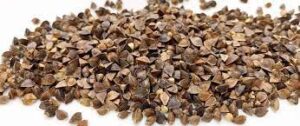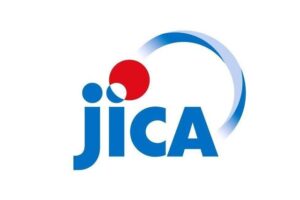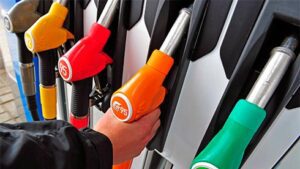
Ukraine, at the request of the Ministry of Agrarian Policy and Food of Ukraine, will receive 140 tonnes of buckwheat seeds, the vessel with the cargo was sent by the Canada-Ukraine Foundation (Canada), Ambassador of Ukraine to Canada Yulia Kovaliv wrote on Facebook on Monday.
The seeding rate of buckwheat is 80-100 kg/ha, respectively, Ukraine can sow 1,120-1,400 ha with seeds received from Canada.
According to the Ministry of Agrarian Policy, by May 12, Ukraine sowed 12,200 hectares with buckwheat, which is 14.9% of the 81,600 hectares planned for this year. Thus, thanks to assistance from Canada, Ukraine can sow 1.3-1.7% of the area planned for this crop.

Metinvest, the largest Ukrainian mining and metallurgical holding, in January-March this year reduced steel production by 8% compared to the same period last year and by 25% compared to the previous quarter – to 1.962 million tonnes, according to a press release from the parent company Metinvest B.V.
According to the report, production of pig iron decreased by 15% and 31% respectively – to 1.828 million tonnes, coke – by 33% and 28% respectively, to 783,000 tonnes.
Metinvest added that in January-March this year, the group reduced the total production of iron ore concentrate by 3% compared to the same period last year and by 10% compared to the previous quarter, to 2.786 million tonnes.
The output of pellets amounted to UAH 1.281 million, which is 35% less than in Q1 2021, but 34% more than in the previous quarter, while the output of coking coal concentrate in the first quarter of this year increased by 29% compared to Q1 2021, but decreased by 14% from Q4 2021 – to 1.276 million tonnes.
Metinvest is a vertically integrated mining group of companies that manages assets in every link of the production chain from iron ore, coal mining and coke production to the production of semi-finished products and finished products from steel, pipes and coils, as well as production of other high value-added products. The group consists of mining and metallurgical enterprises located in Ukraine, Europe and the United States, has a sales network covering all key global markets.
Metinvest’s main shareholders are SCM Group (71.24%) and Smart-Holding (23.76%), which jointly manage the company.
Metinvest Holding LLC is the management company of Metinvest Group.

Japan International Cooperation Agency (JICA) will provide Ukraine with a $100 million loan for 30 years at 1% per annum with a grace period of 10 years, the Ministry of Finance said on its website.
According to the press release, the agreement was signed on Monday by Finance Minister Serhiy Marchenko and JICA President Dr. Akihiko Tanaka.
“The concessional loan of 13 billion yen, which is the first part of the agreed financial assistance between Ukraine and Japan, will be directed to the state budget to finance priority expenses. First of all, to support the most unprotected population of Ukraine,” the press service of the ministry said, citing Marchenko.
The signed agreement refers to the budgetary support for the stabilization of the situation in Ukraine, in particular, the provision of priority social, and humanitarian expenditures, health care, support for internally displaced persons, and other priority expenditures, the Finance Ministry added.

EU foreign ministers have agreed to provide Ukraine with an additional EUR 500 million, bringing the total amount of European assistance to EUR 2 billion, EU diplomat Josep Borrell has said on Monday.
During a press conference, Borrell said the EU has agreed to provide an additional EUR 500 million from the European Peace Facility for the delivery of weapons. What started with EUR 500 million is now approaching EUR 2 billion, according to him.
The head of EU diplomacy said this is just the tip of the iceberg, as the EU member states provide assistance to Ukraine on their own.
Borrell announced plans to provide such additional financial assistance to Ukraine last week.

The average retail prices for gasoline in Ukraine increased by 2.5-3 UAH/liter from May 9 to May 16, according to the data of the A-95 consulting group (Kyiv).
Thus, the average retail prices for A-92 gasoline increased by UAH 3.04/liter over the week, to UAH 39.85/liter, A-95 by UAH 2.42/liter, to UAH 40.12/liter , premium A-95 – by 2.63 UAH / liter, up to 41.66 UAH / liter.
In addition, retail prices for diesel fuel increased by UAH 0.17, to UAH 43.25/liter, for liquefied gas, by UAH 2.44/liter, to UAH 35.1/liter.
Change in average retail prices for petroleum products in Ukraine, UAH/liter
A-92 A-95 A-95+ DT LPG
04/18/21 33.70 34.05 35.09 37.78 28.82
04/25/22 33.65 34.06 35.24 38.35 29.99
04/29/22 34.01 34.63 35.57 39.15 30.58
02.05.22 35.12 36.13 37.24 40.81 30.87
05/09/22 36.81 37.70 39.03 43.08 32.66
05/16/22 39.85 40.12 41.66 43.25 35.10
rev. per week,% +8.3 +6.4 +6.7 +0.4 +7.5
Data: “A-95”